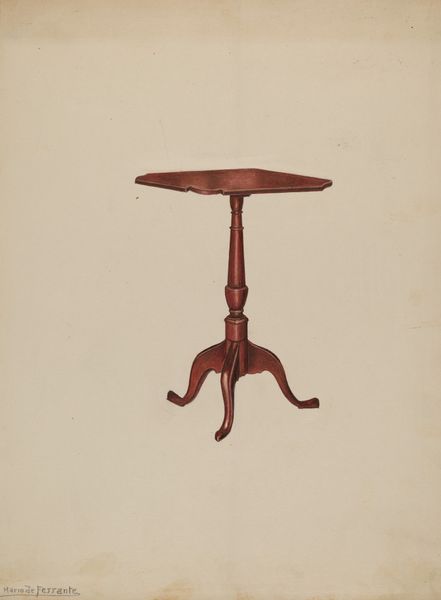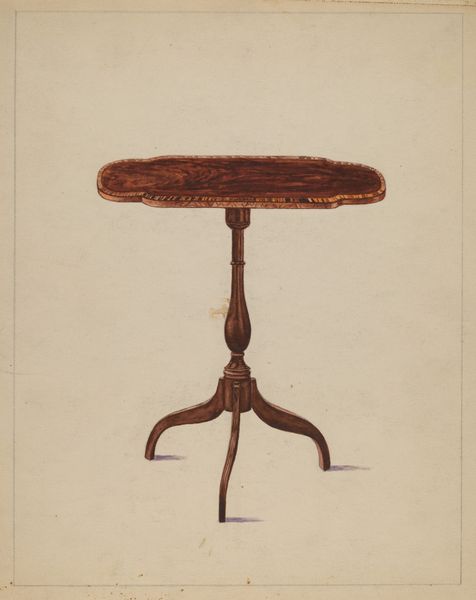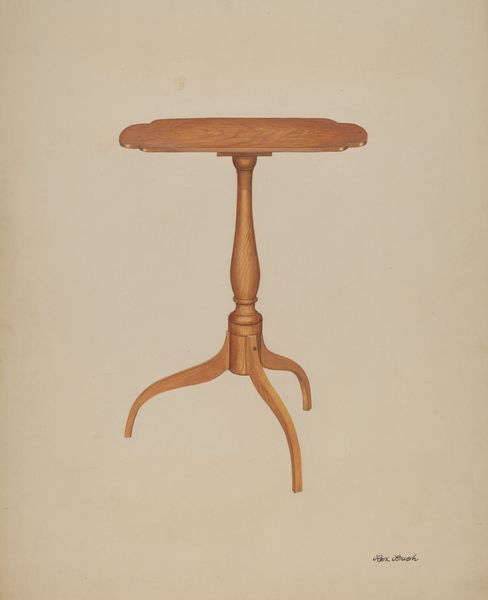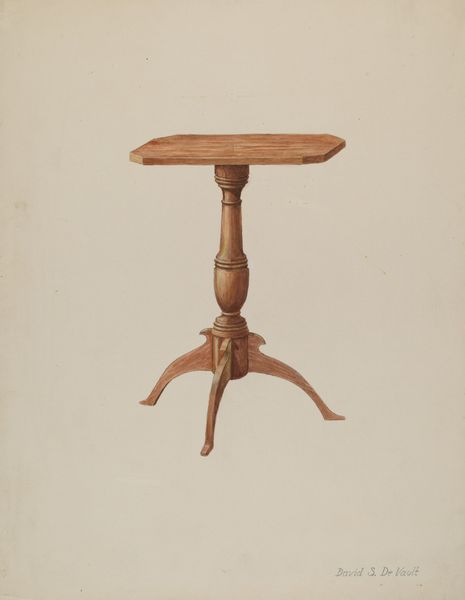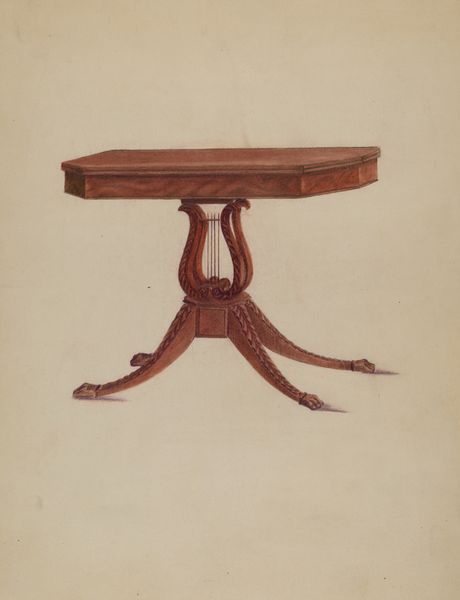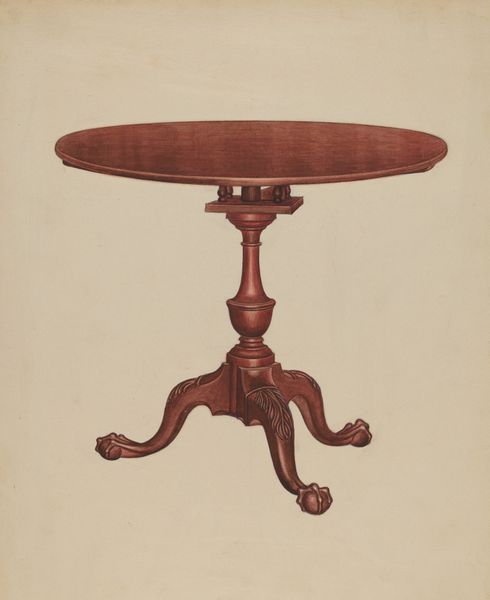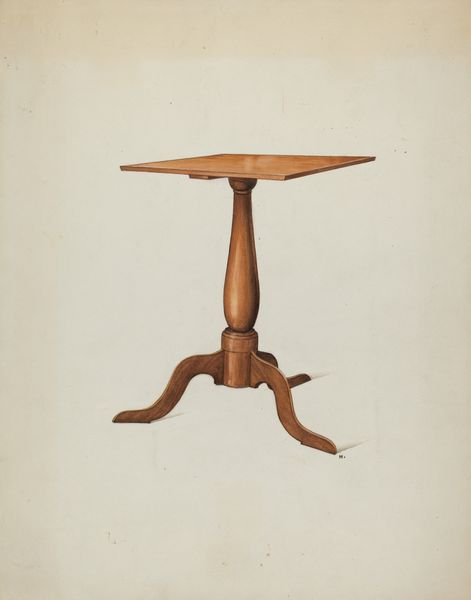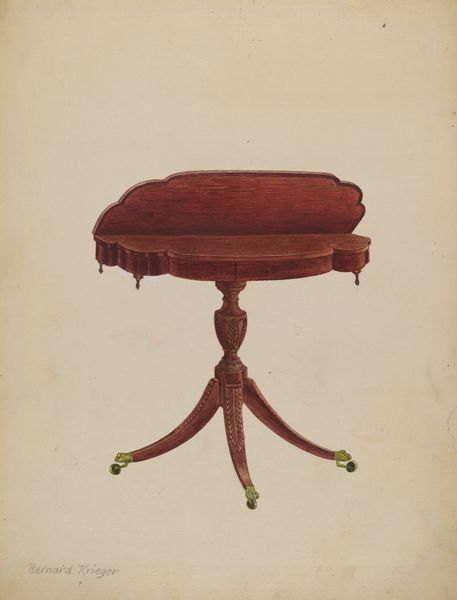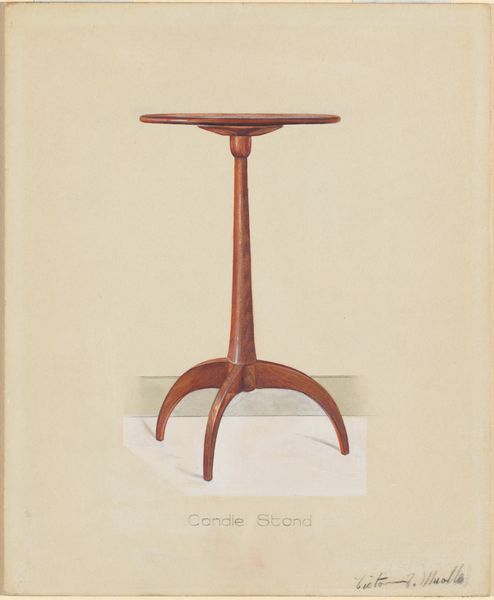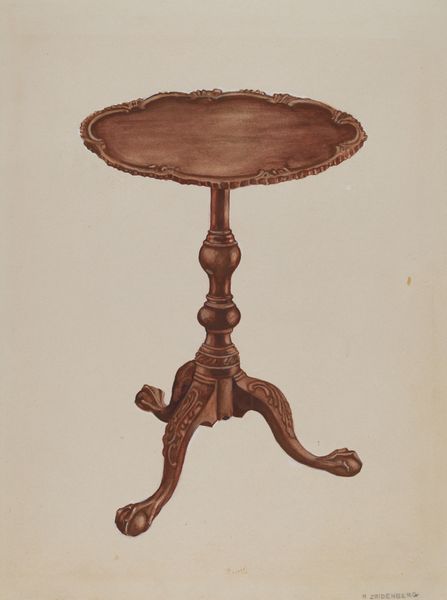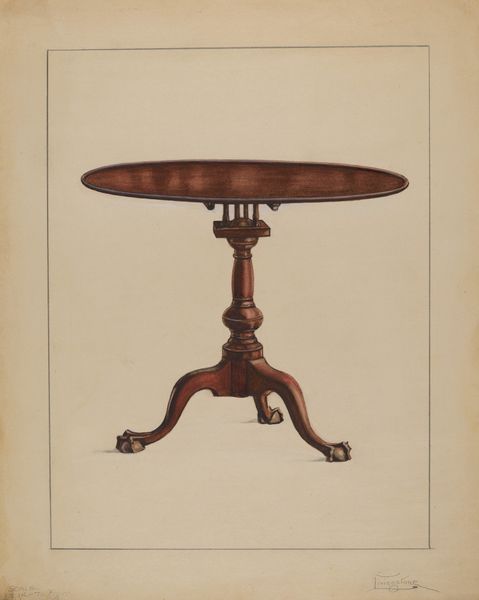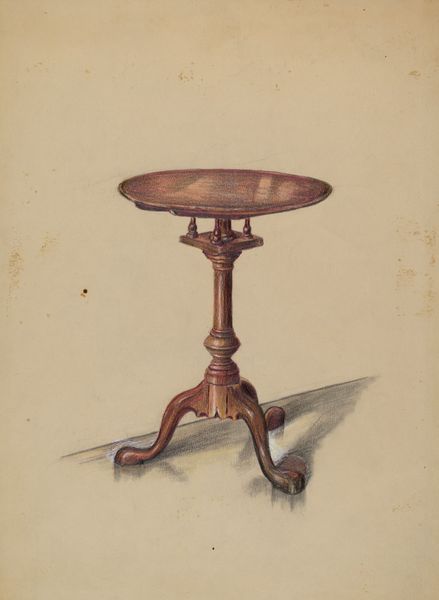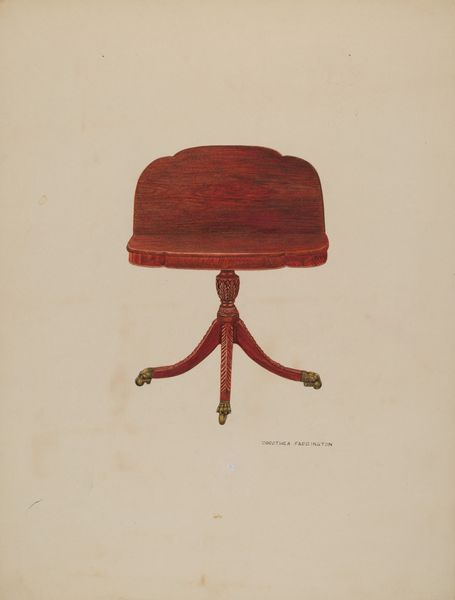
drawing
#
drawing
#
toned paper
#
light pencil work
#
pencil sketch
#
possibly oil pastel
#
pencil drawing
#
coffee painting
#
underpainting
#
watercolour bleed
#
watercolour illustration
#
watercolor
Dimensions: overall: 28.2 x 22.9 cm (11 1/8 x 9 in.) Original IAD Object: none given
Copyright: National Gallery of Art: CC0 1.0
Editor: Here we have Herbert Marsh’s "Tilt Top Table," created around 1937. It's a drawing, likely using pencil and perhaps watercolor on toned paper. The table seems to float against the light background, and the simple composition is so striking. What’s your take on it? Curator: This work, though representational, primarily commands our attention through its formal elements. Observe the artist’s deliberate use of line. The delicate pencil work establishes the foundational structure, while the watercolor bleed lends subtle tonal variations. It seems that the artist focused intensely on geometric form, reducing the object to its purest visual essence. Editor: So, you're drawn to how it’s made, more than what it represents? Curator: Precisely. Note the strategic use of negative space, and the repetition of curves found in the table top and legs, playing off one another to create a visual rhythm. The artist seems preoccupied with creating formal balance, more so than conveying any specific narrative or social context. Do you see that underpainting and how it subtly shifts the color of the piece as a whole? Editor: I see what you mean about the visual rhythm. The legs mirror the curve of the tabletop… it's pleasing to the eye. It’s less about a table and more about lines, shapes, and tones working together. Curator: Precisely. The beauty resides in its internal logic. Editor: I didn't initially think to analyze it that way. I was stuck on what it was – a table – rather than how it was composed. I appreciate how you draw attention to the interplay between line and space, between shape and colour, and create a richer understanding this way. Curator: It reveals how the essence of art lies within the orchestration of forms.
Comments
No comments
Be the first to comment and join the conversation on the ultimate creative platform.
